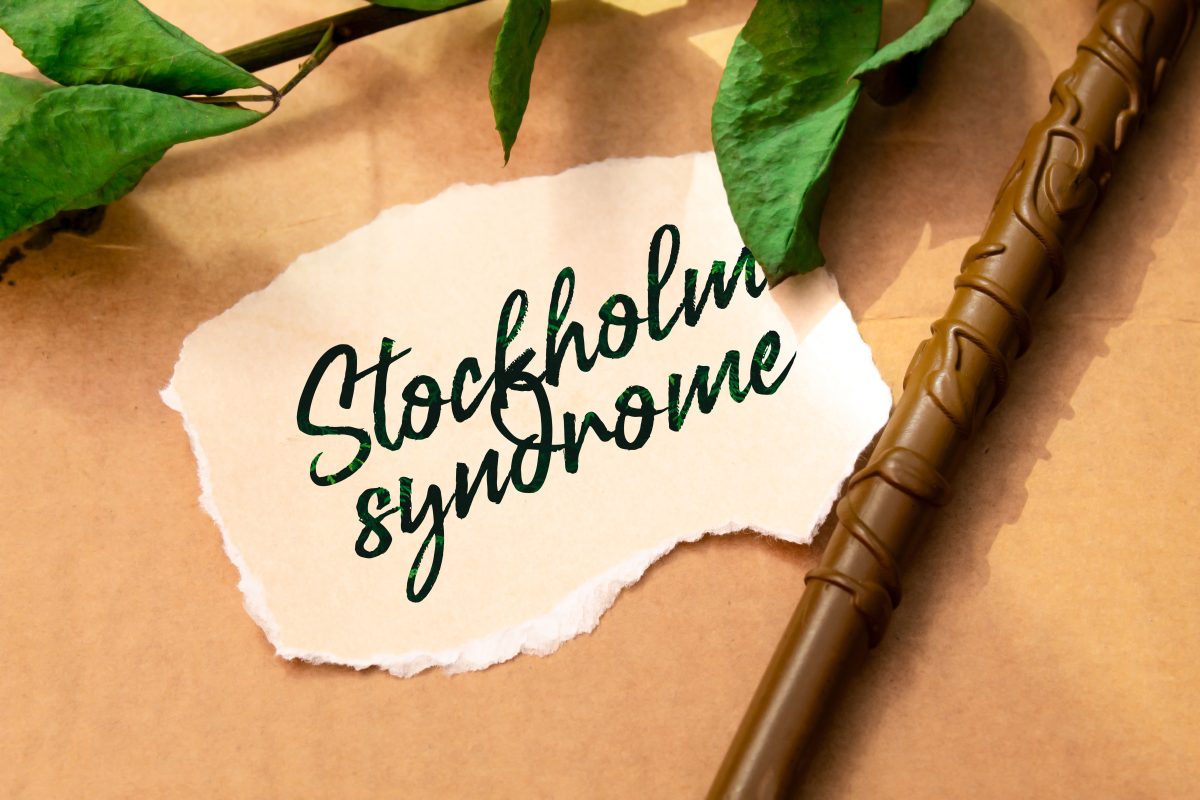
What is the Stockholm Syndrome?
Do you have questions about an appointment with a psychologist or dengem?
| Telephone Germany: | +49 6409 33 23 999 |
|---|---|
| Telephone Switzerland: | +41 41 588 10 15 |
| Send message: | |
| Contact form |

The Stockholm Syndrome is a psychological phenomenon in which hostages or victims of abuse develop an emotional attachment to their captors or abusers. The term was coined after a bank robbery in the Swedish capital, Stockholm, in August 1973. Stockholm syndrome can be seen as a survival strategy that hostages develop to cope with their traumatic situation.
The hostage-takers are the main source of social contact for the hostages and often the only ones who can meet their basic needs such as food, water and security. In such a situation, the hostages may see the hostage-takers as their protectors rather than aggressors.
Although Stockholm Syndrome is a rare phenomenon, it has important implications for understanding psychological responses to traumatic situations, particularly in cases of prolonged captivity or abuse.
Under what conditions does Stockholm syndrome occur?
Stockholm syndrome definition is a psychological response that can occur under certain conditions. The following is a list of conditions in which the syndrome can occur.
Captivity and isolation
The Stockholm Syndrome can occur in situations where a person is held captive or isolated from the outside world. Even if the hostage-taker is abusive or threatening, the hostage or captive may form an emotional bond with the hostage-taker in order to survive.
Research has shown that the intense fear and helplessness resulting from captivity or isolation can lead to the development of Stockholm Syndrome.
Power imbalance
In situations where Stockholm Syndrome occurs, there is often a power imbalance between the abductor and the victim.
The abductor may have control over the victim’s basic needs such as food, water and safety, which can increase the victim’s dependency on the abductor.
One published study has shown that the power imbalance in abusive relationships may contribute to the development of the syndrome in victims.
Emotional manipulation
Emotional manipulation by the abductor is another situation that can contribute to the development of Stockholm syndrome. The abductor may use tactics such as kindness, empathy or flattery to gain the victim’s trust and loyalty.
The abductor’s use of intermittent reinforcement (i.e. reward and punishment) may also contribute to the development of the syndrome, according to a recent article.
Limited escape options
Stockholm syndrome can develop if the victim feels that their options for escape are limited. The victim may feel that the abductor is the only source of safety and protection for the victim.
Victims of financial abuse may develop the syndrome if they feel that their ability to be financially independent is limited.

What are the clinical symptoms of Stockholm Syndrome?
Stockholm syndrome is a psychological condition that can develop in people who have been held captive, abused or traumatised over a long period of time and who develop positive feelings towards their captors or abusers. Below are some common clinical symptoms associated with Stockholm Syndrome.
Positive feelings towards the captor/abuser
People with Stockholm syndrome often have a strong emotional attachment to their captor or abuser and may sympathise with and even defend their actions.
This emotional attachment can be complex and include feelings of gratitude, love and even romantic attraction.
Negative feelings towards authorities or rescuers
Victims of Stockholm syndrome may feel suspicious or even fearful of authorities, such as the police or emergency services, who try to help them escape or intervene in their situation.
This may be due to fear of retaliation by the abuser or a belief that only they really understand the situation.
Cognitive dissonance
Cognitive dissonance is a psychological term that describes the discomfort that occurs when a person holds two contradictory beliefs or ideas.
People with Stockholm syndrome may experience cognitive dissonance as they try to reconcile their positive feelings about their abductor with the reality of their situation.
Hypervigilance
Hypervigilance is a state of heightened alertness and sensitivity to potential threats.
In victims of Stockholm syndrome, hypervigilance may be a result of prolonged exposure to danger or trauma and fear of the perpetrator’s revenge.
Symptoms of PTSD
Victims of Stockholm syndrome may also experience symptoms of post-traumatic stress disorder (PTSD), such as flashbacks, nightmares and hyperactivity. These symptoms can be triggered by memories of the traumatic experience and can interfere with daily life.
It is important to remember that not all people who have experienced trauma develop Stockholm syndrome, and the severity of symptoms can vary greatly from person to person.
If you or someone you know is experiencing symptoms of Stockholm syndrome or other trauma-related mental health problems, it is important to seek help from a trained mental health professional.

How does Stockholm Syndrome affect the individual?
Here are the symptoms of Stockholm Syndrome.
Positive feelings towards the abuser
One of the main symptoms of Stockholm Syndrome is a positive emotional attachment to the perpetrator. People with Stockholm syndrome may feel pity, admiration or even love for their abductor or abuser. This emotional attachment may be reinforced by the abuser occasionally showing affection or compassion for the victim.
Denial of abuse or injury
People with Stockholm syndrome deny or minimise the harm or abuse they have suffered at the hands of the abuser. This may be a coping mechanism to protect themselves from the emotional pain caused by admitting the trauma they have suffered.
Feeling loyalty or gratitude towards the abuser
Victims of Stockholm Syndrome often feel a sense of loyalty or gratitude towards the abuser, believing that the abuser provides them with safety, protection and even survival. This emotional bond can be reinforced by the victim’s feeling of dependence on the abuser for basic needs.
Difficulty trusting others
People with Stockholm syndrome may have difficulty trusting others or making independent decisions. This is often due to the emotional bond they have developed with the abuser and the fear and anxiety of admitting to the abuse they have suffered.
Fear or anxiety of possible rescuers
People with Stockholm Syndrome may be afraid of people or organisations trying to rescue or help them. This is often due to the emotional bond they have developed with the person who abused them, and the fear and anxiety associated with the prospect of leaving the familiar for the unknown.

Are you affected by the Stockholm Syndrome?
If you are in a situation where you have been held captive, abused or traumatised over a long period of time and you are not sure if you have Stockholm Synd., here are some questions you can ask yourself to help you identify the symptoms:
- do I feel positive feelings such as empathy, gratitude or even love towards my abductor or perpetrator?
- do I defend or justify my abductor’s or perpetrator’s actions, even if they are harmful or abusive?
- do I have negative feelings towards people who try to help me, e.g. police or emergency services?
- do I have conflicting beliefs or thoughts about my situation or my abductor/abuser?
- do I feel hypervigilant or tense even when I am no longer in danger?
Am I experiencing symptoms of post-traumatic stress disorder, such as flashbacks, nightmares or hyperarousal?
It is important to know that only a trained psychiatrist can make an accurate diagnosis of Stockholm syndrome. If you are experiencing any of these symptoms, it is important to consult a mental health professional who can make an appropriate assessment and develop a treatment plan tailored to your needs.
Treatment for Stockholm syndrome
Treatment and recovery from Stockholm syndrome can be a long and complex process, as it involves a strong emotional attachment to the perpetrator or abductor. Here are some possible approaches to treatment and recovery from Stockholm syndrome, with up-to-date references:
Therapy
Therapy can be a useful approach to treating Stockholm syndrome, particularly cognitive behavioural therapy (CBT) and trauma-focused therapy. Cognitive behavioural therapy can help victims of Stockholm syndrome to recognise and challenge their distorted beliefs and feelings about the perpetrator, while trauma-focused therapy can help them to process and cope with the trauma of their experience.
A recent article describes how CBT can be an effective approach to treating Stockholm Syndrome in cases of domestic violence.
Support groups
Support groups can provide a safe and supportive environment for survivors of Stockholm syndrome to share their experiences with others who have had similar experiences. Support groups can also provide information and resources on coping strategies, self-care and building healthy relationships.
Recent articles have highlighted the benefits of support groups for victims of domestic violence, including victims of Stockholm syndrome.

Safety planning
Safety planning can be an important aspect of recovery from this syndrome, especially in situations where the victim may still be threatened by the perpetrator or abductor. Safety planning involves identifying potential risks and developing strategies to stay safe, such as building a support network, seeking legal protection and developing an escape plan.
It is important to remember that recovery from Stockholm synd. can be a long and difficult process and that each person’s experience is unique. A combination of approaches may be needed to achieve recovery and treatment.
How does dengem help people with Stockholm Syndrome?
Psychologists referred by dengem help people with Stockholm Synd. to develop self-esteem, learn healthy coping skills and take back control of their lives!
You can make an appointment to see one of our psychologists at any time. In Europe, it is now very easy to get therapy in Turkish, German and English!
dengem
References
- Effiong, J. E., Ibeagha, P. N., & Iorfa, S. K. (2022). Traumatic bonding in victims of intimate partner violence is intensified via empathy. Journal of Social and Personal Relationships, 39(12), 3619–3637. Stokholmo. Lima syndrome, Stockholm Sendromu Nedir? Belirtileri ve Tedavisi
- Eske, J. (2020, October 1). What is Stockholm syndrome? Lima syndrome?
- Namnyak, M., Tufton, N., R, S., Toal, M., Worboys, S., & Sampson, E. L. (2007). ‘Stockholm syndrome’: psychiatric diagnosis or urban myth? Stokholmo Acta Psychiatrica Scandinavica, Lima syndrome
- Oyeyemi, A., Onigbinde, O. A., Lateef, I. C., & Onigbinde, A. (2023, January 1). Stockholm syndrome: Causes, implications, and way out. Stokholmo ResearchGate. Lima syndrome
- Paulino, M. (2016). Characterization of Spousal Violence Victims. Stokholmo Ciottone’s Disaster Medicine. Lima syndrome